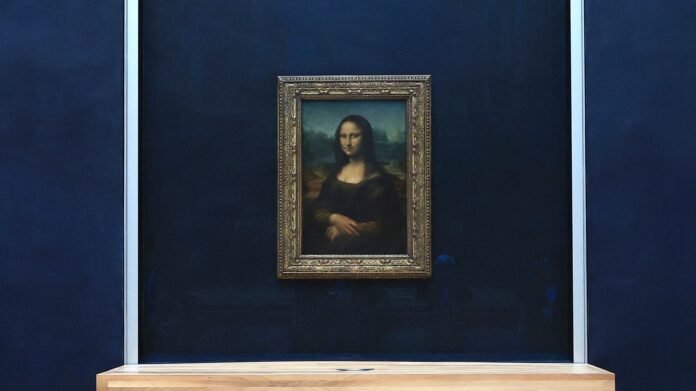Over five centuries have passed since Leonardo da Vinci’s masterpiece, the Mona Lisa, graced the world with its enigmatic smile. Yet, the mystery surrounding this iconic painting continues to captivate scholars and art enthusiasts alike. Now, an art-loving geologist believes she has decoded one of the Mona Lisa’s most enduring enigmas – the background landscape.
Ann Pizzorusso, a geologist and Italian Renaissance specialist, claims to have uncovered the inspiration behind the backdrop of the Mona Lisa. While art historians have long speculated on the locations that may have influenced Leonardo’s landscape, Pizzorusso believes she has identified the specific setting as Lecco, a town nestled in northern Italy.
In her quest to unravel the secrets of the Mona Lisa’s background, Pizzorusso found herself drawn to Lecco, situated on the picturesque shores of Lake Como. It was here, amidst the serene beauty of this region, that she became convinced of the painting’s connection to the town. Pizzorusso’s discovery challenges previous theories and adds a new dimension to the ongoing debate surrounding the Mona Lisa’s origins.
Speaking of her revelation, Pizzorusso expressed her conviction that Leonardo had indeed painted the Mona Lisa in Lecco. This assertion sheds new light on the renowned artwork, offering a fresh perspective on its creation and the artist’s inspiration. Lecco, once known primarily as the setting of Alessandro Manzoni’s novel “The Betrothed,” now finds itself intricately linked to one of the most celebrated paintings in history.
The significance of Pizzorusso’s discovery extends beyond mere artistic curiosity. It represents a profound insight into the mind of Leonardo da Vinci and the intricate layers of symbolism embedded within his work. By pinpointing Lecco as the backdrop of the Mona Lisa, Pizzorusso invites viewers to reexamine the painting through a new lens, deepening their appreciation for its rich historical and cultural context.
As the centuries-old mystery of the Mona Lisa continues to unravel, Pizzorusso’s findings offer a compelling glimpse into the genius of Leonardo da Vinci and the timeless allure of his masterpiece. With each revelation, the enigmatic smile of the Mona Lisa beckons us to delve deeper into its secrets, reminding us of the enduring power of art to captivate and inspire.
The geologist’s breakthrough discovery was not merely a matter of intuition or speculation; rather, it was grounded in scientific analysis of the geological features of Lecco. Pizzorusso found that the rock formations in the region were predominantly composed of limestone, a crucial detail that aligned with what is depicted behind the enigmatic noblewoman in the Mona Lisa.
Limestone, with its characteristic texture and coloration, forms a prominent part of the landscape in Lecco. Its distinct appearance, marked by intricate patterns and subtle variations in hue, closely mirrors the geological formations depicted in the background of the painting. This striking resemblance provided Pizzorusso with compelling evidence to support her theory that Lecco served as the inspiration for Leonardo’s masterpiece.
Moreover, the presence of limestone in the region has significant implications for understanding the historical and environmental context in which the Mona Lisa was created. Limestone, a sedimentary rock, is often associated with regions that have undergone geological processes such as sedimentation and fossilization over millions of years. Its presence in Lecco suggests a rich geological history, characterized by the interplay of natural forces and the passage of time.
By uncovering the geological connection between Lecco and the Mona Lisa, Pizzorusso has offered a deeper insight into the artistic process of Leonardo da Vinci. The use of limestone in the background of the painting not only reflects the artist’s meticulous attention to detail but also underscores his keen observation of the natural world. Through his masterful manipulation of light and shadow, Leonardo was able to imbue the landscape with a sense of depth and atmosphere, creating a backdrop that enhances the enigmatic allure of the Mona Lisa’s enigmatic smile.
Pizzorusso’s discovery highlights the symbiotic relationship between art and science, demonstrating how interdisciplinary approaches can enrich our understanding of cultural artifacts. By bridging the gap between geology and art history, she has shed new light on the origins of one of the most iconic paintings in history, reaffirming its status as a timeless masterpiece that continues to captivate and intrigue audiences around the world.

